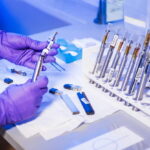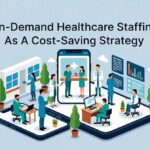An extensive analysis of over 30,000 online reviews of healthcare providers has confirmed that inadequate service is the primary source of dissatisfaction among patients. The research findings indicate that 96% of patient complaints result from subpar service, while only 4% are attributed to misdiagnoses.
When patients visit healthcare facilities today, they are considered customers and have high expectations for the quality of care they receive. Patient satisfaction is a continuous process rather than a finite outcome. It is not a static endpoint but a dynamic aspect that healthcare facilities constantly strive to improve throughout the entire patient-provider relationship. In addition to enhancing the patient experience, favorable patient interactions are linked to various key outcomes, including reimbursement, patient retention, and clinical results.
The following are some of the most effective and straightforward ways to increase patient satisfaction at your facility:
Improved Workflows
In the healthcare industry, staff must exhibit empathy and compassion towards patients. However, due to the demands of the workflow, staff may become overwhelmed and demonstrate a lack of engagement, resulting in a mechanical approach to patient care.
In order to optimize the balance between staff workload and quality patient care, it is necessary to reevaluate the methods for providing in-patient care. This will ensure that the staff has ample time to attend to the needs of the patients, reducing their discomfort and stress.
One of the best ways to improve workflows is by using technology. For instance, your facility can opt for automated scheduling systems to provide a more efficient and accurate way to schedule and manage shifts, helping to reduce errors and save time. Another example would be using a medical scanner to accurately add and access patient data, which provides a faster and more secure way to manage records.
By streamlining processes and incorporating technology, medical and administrative operations can be enhanced, allowing staff to devote more time to providing quality care to patients.
Communicate With Patients in an Effective and Timely Manner
In a clinical setting, it is common for multiple clinicians to attend to a patient, particularly in the case of geriatric patients. This can confuse the patient and their family regarding their overall health status, diagnosis, treatment, and prognosis. Effective and timely communication is essential to ensure a comprehensive understanding of the patient’s condition. The following aspects should be communicated to the patient and their designated family members:
– Confirmed diagnosis,
– Ongoing diagnostic efforts,
– Treatment plan,
– The expected recovery period,
– The potential side effects of medications and any other relevant information.
Minimize Waiting Times
Using off-site check-in can effectively reduce extended waiting periods in the waiting room. Despite this measure, there may be instances where triage results in prolonged waiting times for some patients.
In order to mitigate the inconvenience caused by such delays, healthcare practitioners should adopt a proactive approach by informing patients about the reasons for the wait. This can be achieved through effective communication by front office staff, ensuring that patients are kept informed and updated.
Additionally, enhancing the comfort of the waiting room environment can significantly improve the patient experience. This can be achieved by replacing uncomfortable seating arrangements with more comfortable alternatives, such as cushioned chairs. Providing amenities such as magazines, small games for children, and television sets can also help to distract patients and make the waiting time bearable.
Establish a Process for Obtaining Feedback
It is imperative to establish a systematic process for obtaining feedback from patients. Failure to do so may negatively impact patient satisfaction, leading to a potential loss of business. Studies have shown that a significant proportion of patients who have had a poor experience but received a satisfactory resolution return to the same practice.
It is advisable to provide patients with ample opportunities to voice their concerns, both in-person and post-visit. The facility must ensure that its staff is trained to handle negative feedback in a professional and empathetic manner, offering apologies and providing viable solutions. Incorporating this feedback into the hospital’s or clinic’s operations is essential to improve patient satisfaction and experiences.
Educate the Patient
Focusing on patient education is of paramount importance in enhancing the patient experience. It is essential to equip patients with the necessary information and understanding to make informed decisions regarding their health and well-being. By providing patients with comprehensive education, the healthcare facility demonstrates its commitment to their care and overall health.
Studies have demonstrated that patient education positively correlates with patient retention, leading to high patient satisfaction and fostering long-term relationships. Investing in patient education ultimately benefits both the patient and the facility, promoting a collaborative approach to healthcare.
Protect the Confidentiality Of Patients
Protecting patient confidentiality is a fundamental aspect of healthcare. It is both a moral obligation and a legal requirement that must be upheld. Neglecting to do so can have severe consequences for the practice, including a decrease in patient satisfaction and potential legal and financial ramifications.
Adhering to strict confidentiality protocols and maintaining the highest data security standards is essential to prevent privacy breaches, preserve patients’ trust, and avoid potential legal liabilities.
Provide Patients with Personalized Care
Consumers today expect a personalized experience. This can be achieved by analyzing individual preferences, history, and interests.
Similarly, healthcare facilities can offer personalized attention to their patients by implementing a loyalty program. This helps build trust and establish a rapport with patients. For instance, a system could be designed to send congratulatory messages to patients with favorable health indicators, such as good blood pressure. In the event of a change in condition, the program could initiate re-evaluation or prompt the medical team to take necessary action.
The utilization of such systems can also result in improved time management and enhance the effectiveness of treatment. Healthcare facilities can demonstrate their commitment to individualized patient care and improve the overall patient experience by providing personalized attention.
Final Words
The aforementioned are some of the many ways hospitals can elevate the in-patient experience. Healthcare facilities can create an unforgettable patient experience by prioritizing patient care and harnessing technology.
It is imperative to note that patient satisfaction is a continuous pursuit of excellence and requires unwavering dedication and attention. A healthcare practice that fosters a culture of patient satisfaction is likely to experience growth in revenue and practice size.
Read Also
- Creative Approaches to Alleviating Healthcare Staff ShortagesHospitals and clinics are facing staff shortages, which makes it harder to take care of patients well. Finding simple and useful solutions is very important. Easy changes like flexible work hours, good training, and chances to grow can help staff stay happy. Technology, like online doctor visits and helpful tools, can make work easier. Smart… Read more: Creative Approaches to Alleviating Healthcare Staff Shortages
- Understanding the Role of Sterilizers in Healthcare FacilitiesHave you ever wondered how hospitals keep their equipment safe enough to use on dozens of patients every day? Most people never think about what happens behind the scenes, yet these hidden steps play a huge role in patient safety. Sterilizers are part of that system, working quietly to remove harmful germs before any instrument… Read more: Understanding the Role of Sterilizers in Healthcare Facilities
- Building Healthcare Access Where It’s Needed Most: A Local First ApproachHealthcare shouldn’t depend on where you live. But in the U.S., it often does. If you’re in a big city, you likely have options. If you’re in a small town or an underserved neighbourhood, it’s a different story. To fix this, more healthcare leaders are turning to a local-first approach. That means putting clinics and… Read more: Building Healthcare Access Where It’s Needed Most: A Local First Approach
- Revolutionizing Patient Engagement: Innovative Solutions for Improved Care and Treatment SuccessNavigating healthcare system can often feel overwhelming for patients. Between appointments, prescriptions, and treatment regimens, it’s easy for crucial details to get lost in the shuffle. That’s why effective patient engagement and support solutions are more important than ever. Companies like Serva Health, with their pharma hub services, are stepping up to ensure that patients… Read more: Revolutionizing Patient Engagement: Innovative Solutions for Improved Care and Treatment Success
- On-Demand Healthcare Staffing As A Cost-Saving StrategyThis is an exciting and challenging time for the healthcare industry. Technology is advancing almost faster than humans can keep pace. New legislation is creating fresh challenges for the future of healthcare, and the shifting population demographic continues to place more pressure on healthcare facilities. Amidst these changes, healthcare facilities are facing a critical staffing… Read more: On-Demand Healthcare Staffing As A Cost-Saving Strategy






